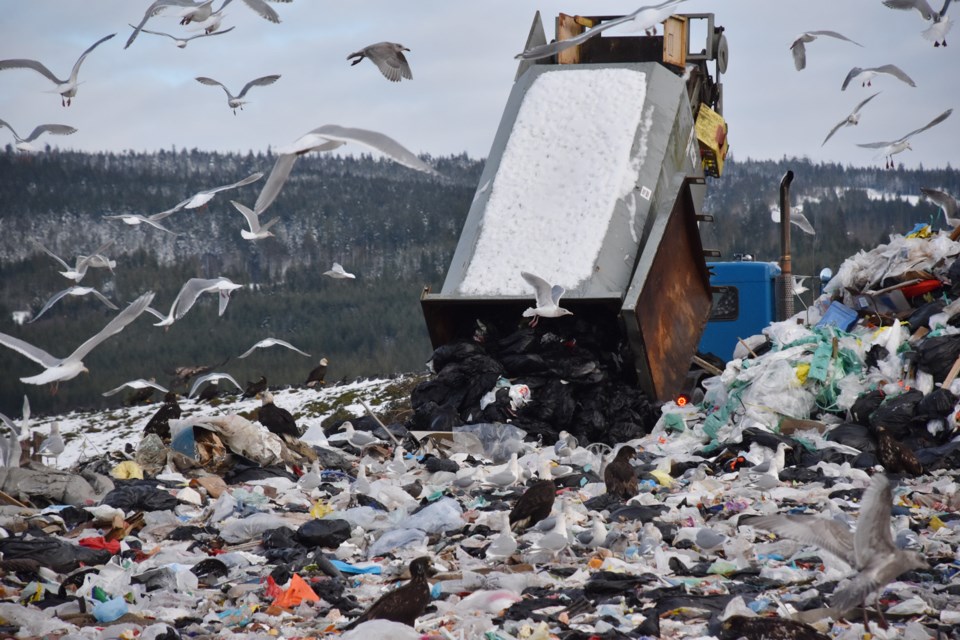Researchers have been flocking to coastal communities in B.C. to collect blood, feathers and track the movements of several species of gulls, including at the Sechelt landfill.
“The Salish Sea is a globally important water body for a diverse community of marine birds in winter, and recent reports suggest that several species may be experiencing population declines,” says a project description by Environment and Climate Change Canada. A multi-year study is underway to find out why, by tracking what gulls eat, how they behave and where they come from.
“There’s high priority in the government right now on collecting ecological baselines for the Salish Sea,” said project lead Mark Hipfner.
Gulls in particular are a good indicator species.
About two weeks ago, researchers were trapping birds from Sechelt to Pender Harbour over a two-day period before moving on to Powell River and trapping up to Lund, as part of the winter fieldwork.
Gulls were bated and caught using a monofilament line with nooses at the end, allowing researchers to pull the line and trap the birds’ feet. “It’s pretty low tech,” said Hipfner.
Researchers also trapped and released gulls in Sooke, Victoria, Saanich, the Gulf Islands National Park, Vancouver and Nanaimo. “Basically we’re trying to cover as much of the Salish Sea as we can,” he said.
They have collected samples from glaucous-winged gulls and other overwintering species, and plan to do so over the next two winters to understand the provenance of the birds and get a picture of the migration of the species.
This summer, researchers will collect eggshell fragments from breeding colonies from Puget Sound, Wash., to the western Aleutian Islands in Alaska, to develop a genomics map. This will give them a baseline of the birds’ genomic diversity so they can monitor changes over time, such as whether species move north in response to climate change.
Additionally, three birds from each area, totalling 15, have been outfitted with GPS trackers to find out how the birds move around the Salish Sea and monitor their behaviour.
It’s not just wild environments where they are being monitored, either. Gulls have been captured at several landfill sites, too, including the Sechelt landfill, as well as landfills in Vancouver, Victoria and Nanaimo.
“A very large proportion of the glaucous-winged gulls that are in the Salish Sea are feeding at landfills. When you go to the Vancouver landfill there are thousands of gulls there,” said Hipfner. “This isn’t unusual or freakish behaviour by these birds.”
By tracking the birds, researchers can develop a food web model to find out how healthy the birds are, including contaminant levels. While some gulls feed primarily on mussels, sea stars and fish, others are mostly eating human garbage, “which is one of the reasons we wanted to go out to the landfills,” said Hipfner. “We want to cover as much of the variation as we can.”
They want to know, for example, whether gulls are being contaminated and what those food sources are, which Hipfner said is “a really important question to answer.”
It’s important also because understanding where contaminants come from could have “pretty significant” human health implications, since our food sources are so similar. “It’s a pretty short step from gulls to humans, in that regard,” Hipfner said.
The collaborative project also involves researchers from Simon Fraser University and the University of Lethbridge.
Results from the study are expected to roll out over the next three to four years.



